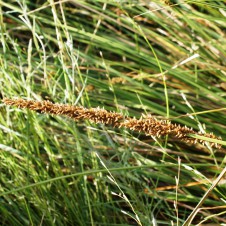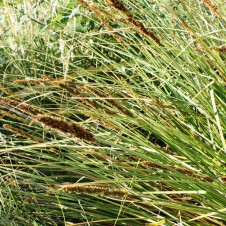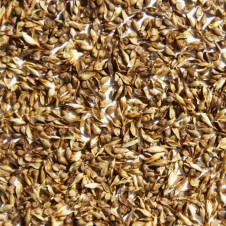General Description: This is a robust, tufted, mid-green sedge with erect, sharply 3-angled flower stems (edges finely and sharply toothed and capable of inflicting deep cuts) to 1.5 m tall
The leaves grow in dense tufts and they are flat near tip and folded (V-shaped in cross-section) near the base, they are smooth except for finely and sharply toothed margins.
Flowers and Fruit: Flowers are a series of narrow, densely-flowered spikes, flowers from September to November. Fruit is an ovoid nut (flattened on one side), enclosed by a chaffy, sack-like capsule to 5 mm long, tapering into a fine tip.
Site Preference and Tolerances: Prefers the edges of lakes dams and watercourses, tolerates most soils where moisture is available. Is frost hardy.
Life Span: Short (less than 20 years) to Medium (20 to 80 years).
Wildlife Value: This is a butterfly food plant because it provides food for caterpillars of Spotted Skipper, Bright-eyed Brown, Western Bright-eyed Brown and Alpine Skipper. Carex species provide an important habitat for many different species. Frogs, birds, fish and crustaceans all benefit from the habitat provided by its presence and larger animals also benefit from protection from harsh climatic conditions.
Other Values and Uses: Aboriginal people used the leaves to make baskets. This species is excellent for erosion control and plays an important role in water-bodies by improving water quality. Sedges, such as this one, tend to reduce evaporation from wetlands and dams by reducing the amount of wind across the water. It is very useful for ornamental situations, with foliage providing strong patterns and good architectural effects. In gardens the tufty growth is suitable for boggy conditions, pond edges and water courses.
Other Scientific Names: Carex paniculata
Other Common Names: Tussock Sedge
Germination Information: Usually grows well in a few weeks without any treatment.



